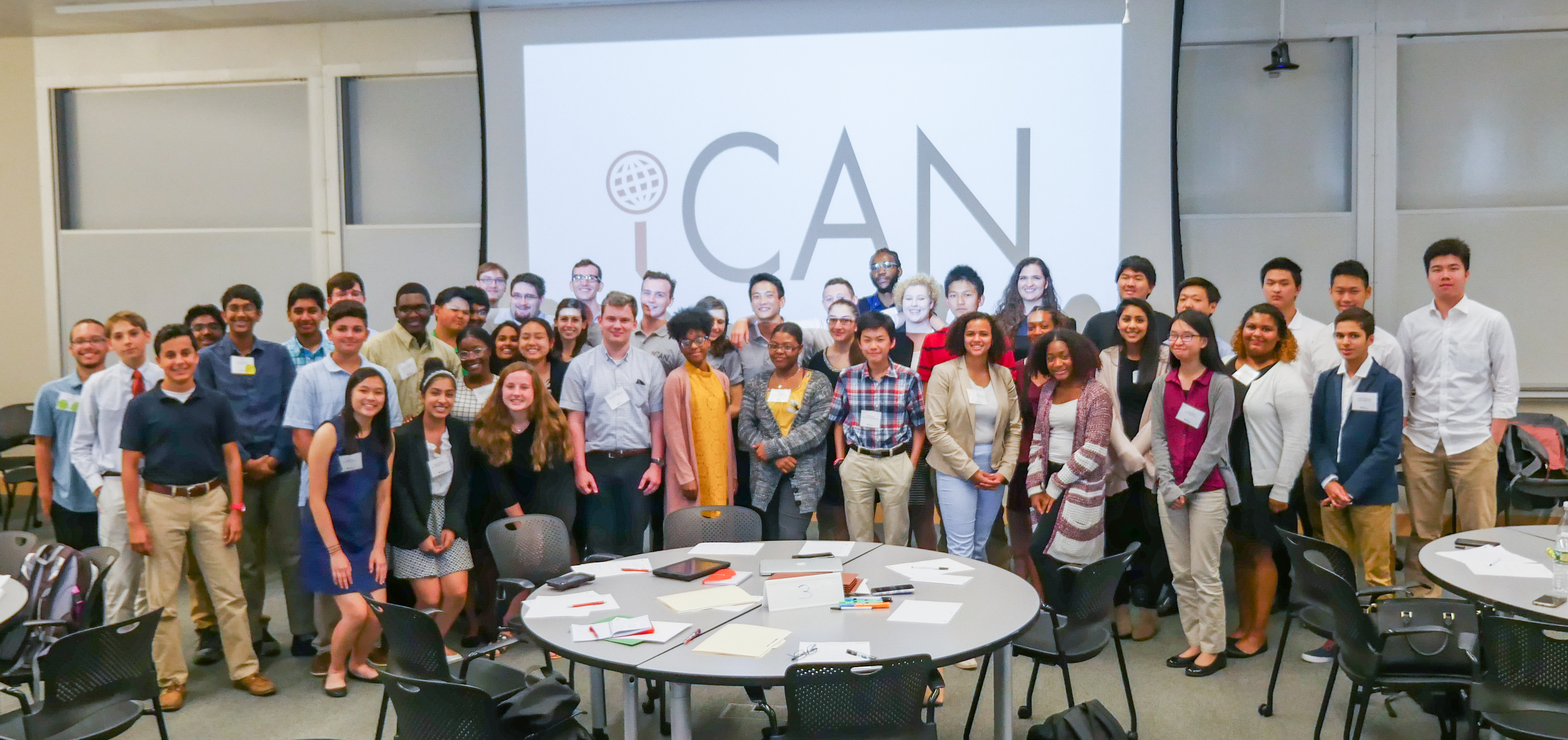On August 4, iCAN bridged new territory by showcasing the first ever iCons-style case study presented to high-school students grades 9-12. Seven alumni gathered at MIT as part of Junior Achievement’s Summer Institute to present a case study highlighting food deserts to over 40 students from various Massachusetts high schools.

The iCons Case Study is broken down into 5 components: inception, engagement, research, create, and reflect. The goal is to facilitate student discussions and inspire the future generation of leaders in science to propose novel solutions to global challenges and societal problems. By introducing students to this problem-solving approach in high school, we hope to expand their critical thinking skills and provide opportunities to solve real-world challenges.
Kevin Cavanaugh, Isaac Han, Jacob Lytle, Sean McGrath, Matt Richard, Olivia Roberts-Sano, and Emily Travers played a role in the smashing success of the first implementation of this program at a high school level.

Jacob Lytle took the lead on the inception stage, introducing the topic, the issues, the problems, and the underlying science. The focus was on a food desert that has recently sprung up in Hull, MA and the associated causes and results.

In the engagement stage, Sean McGrath challenged seven teams, six students each, to think about and begin to learn about food deserts, exploring the boundaries of their knowledge, and determining what further information or understanding is required to fully comprehend the topic. Each team fleshed out the specific actionable question that they decided to focus on.
During the research stage, student teams answered what was not fully or adequately explored and understood during preceding stages. Students were given a “library” of existing information sources (government sources, news, and scientific papers) to fill in knowledge gaps and identify areas where more research is needed.

The create stage is when students integrated new understanding based on what was learned through their research and presented their proposals. Olivia Roberts-Sano and the other iCAN members facilitated team discussions to produce presentations in which students shared their ideas with the broader group. The ideas the students came up with were incredibly creative, ranging from the focus on a need for dams preventing coastal flooding to drone food delivery systems.
Reflection is one of the most important components to the case study. Students were given a survey with several questions to guide their reflection of the strengths, weaknesses and opportunities associated with the case study. The student self-assessments are utilized to articulate and guide the future development of iCONS case studies presented to high school students.

Students and volunteers alike were impressed by the level of engagement and the practicality of this teaching style to developing future leaders, as evidenced by some feedback we received.

The students were interested, engaged and the buzz in the room afterwards was wonderful to see.
Rhonda Lushan, Senior Development Officer for Corporate Relations, Junior Achievement of Northern New England
The case study allowed students to use all the skills they learned during the week and apply it to this case study. I’d love to bring the case study back again next year to the JA Summer Institute.
Phil Symons, Program Director, Junior Achievement of Northern New England
I enjoyed that it felt like we were actually solving something relevant. I learned that working with a diverse group of people provides the best results.
Joe Huang, Student Participant
I loved the ability to brainstorm and think of creative ways to solve problems. I learned a lot but the most important was that it’s okay to think outside the box.
Victoria DeVita, Student Participant